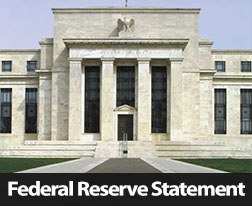What’s Ahead For Mortgage Rates This Week – February 9, 2015
 Last week’s economic news included construction spending, which fell shy of expectations but exceeded the prior month’s spending, and several consumer and labor-related reports. The details:
Last week’s economic news included construction spending, which fell shy of expectations but exceeded the prior month’s spending, and several consumer and labor-related reports. The details:
Mortgages More Accessible: Fed Survey
A Federal Reserve survey of senior loan officers at 73 U.S. banks and 23 branches of foreign banks indicated that mortgages may be more accessible. While banks eased credit standards for mortgages eligible for purchase by Fannie Mae and Freddie Mac, consumer demand for mortgages fell over the last three months. This seems puzzling given lower mortgage rates, but mortgage lending rules remain tough for borrowers with less than pristine credit.
Mortgage rates dropped last week according to Freddie Mac. The average rate for a 30-year fixed rate mortgage was 3.59 percent with discount points higher at 0.70 percent. The average rate for a 15-year fixed rate mortgage was seven basis points lower at 2.92 percent with discount points higher at 0.60 percent. The average rate for a 5/1 adjustable rate mortgage was four basis points lower at 2.82 percent with discount points unchanged at 0.40 percent.
Lower mortgage rates are great news for home buyers and homeowners seeking to refinance, but only if mortgage loans are available.
Construction Spending Higher, Consumer Spending Drops, Inflation Stalls
According to the Department of Commerce, Construction Spending rose by 0.40 percent in December against November’s reading of -0.20 percent and expectations of 0.70 percent growth. December’s reading represented $981.2 billion in construction spending on a seasonally-adjusted annual basis. Residential construction rose by 0.30 percent.
Consumer spending fell by -0.30 percent and was consistent with analysts’ expectations. This was the highest month-to-month drop in consumer spending since September 2009. Consumers spent less on vehicles and fuel. Lower fuel prices were seen as the driving force behind less consumer spending. Core personal expenditures did not increase in December. Core inflation, which excludes volatile food and energy sectors, was well below the Fed’s target annual inflation rate of 2.00 percent with a reading of 1.30 percent year-over-year.
Labor Reports: Mixed Signals
Weekly jobless claims rose to 278,000 against the prior week’s reading of 267,000 new jobless claims, but claims were lower than the expected reading of 290,000 new jobless claims. Nonfarm payrolls for January were higher in January at 257,000 jobs added. Analysts expected only 230,000 new jobs added in January based on December’s reading of 267,000 jobs added.
ADP Payrolls reported 213,000 private sector jobs added in January against December’s reading of 253,000 private sector jobs added. January’s lower reading is likely based on seasonal hiring during the holiday season. National Unemployment rose from December’s reading of 5.60 percent to 5.70 percent. In recent months national unemployment rates have fallen below the Fed’s target reading of 6.50 percent.
What’s Ahead
This week’s scheduled economic reports include data on retail sales, job openings, labor market conditions and weekly reports on new jobless claims and Freddie Mac’s survey of mortgage rates.

 The Federal Open Market Committee (FOMC) said in its last statement for 2014 that although economic conditions have improved at a moderate pace, the Fed believes that the target federal funds rate of between 0.00 and 0.25 percent remains “appropriate.” While labor markets show expanding job growth and lower unemployment rates, FOMC members noted that housing markets are recovering slowly.
The Federal Open Market Committee (FOMC) said in its last statement for 2014 that although economic conditions have improved at a moderate pace, the Fed believes that the target federal funds rate of between 0.00 and 0.25 percent remains “appropriate.” While labor markets show expanding job growth and lower unemployment rates, FOMC members noted that housing markets are recovering slowly.